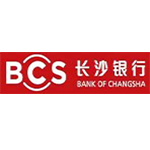Chongqing Rural Commercial Bank(601077)
Search documents
行业点评报告:测算:BCBS调整利率冲击幅度对ΔEVE的影响
KAIYUAN SECURITIES· 2025-12-10 05:45
银行 2025 年 12 月 10 日 投资评级:看好(维持) 行业走势图 数据来源:聚源 -19% -10% 0% 10% 19% 29% 2024-12 2025-04 2025-08 2025-12 银行 沪深300 相关研究报告 《大行 ΔEVE 指标测算及承接债券 能力评估—行业深度报告》-2025.12.8 《存款偏离与指标问题对当前司库策 略的影响—行业深度报告》-2025.12.4 《理财投资权益的当下与未来—理财 持仓全景扫描系列(七)》-2025.11.27 测算:BCBS 调整利率冲击幅度对ΔEVE 的影响 ——行业点评报告 投资建议 (1)底仓配置:大型国有银行。受益标的农业银行、工商银行;(2)核心配置: 头部综合龙头。受益标的招商银行、兴业银行,推荐标的中信银行;(3)弹性配 置:受益标的江苏银行、重庆银行、渝农商行。 风险提示:宏观经济增速下行;债市利率大幅调整。 | 刘呈祥(分析师) | 朱晓云(分析师) | | --- | --- | | liuchengxiang@kysec.cn | zhuxiaoyun@kysec.cn | | 证书编号:S0790523060002 ...
2025年国家开发银行





Shang Hai Zheng Quan Bao· 2025-12-09 18:53
金融债承做市获奖 机构名单 卓越承销商 中信银行股份有限公司 上海浦东发展银行股份有限公司 兴业银行股份有限公司 中国光大银行股份有限公司 杭州银行股份有限公司 徽商银行股份有限公司 宁波银行股份有限公司 中原银行股份有限公司 中国工商银行股份有限公司 上海银行股份有限公司 优秀承销商 长沙银行股份有限公司 东方证券股份有限公司 恒丰银行股份有限公司 南京银行股份有限公司 北京农村商业银行股份有限公司 青岛农村商业银行股份有限公司 江苏银行股份有限公司 渤海银行股份有限公司 华夏银行股份有限公司 上海农村商业银行股份有限公司 河南农村商业银行股份有限公司 中信证券股份有限公司 重庆农村商业银行股份有限公司 久久为功奖 中信银行股份有限公司 杭州银行股份有限公司 上海浦东发展银行股份有限公司 中国建设银行股份有限公司 广发银行股份有限公司 长沙银行股份有限公司 中国建设银行股份有限公司 广东南海农村商业银行股份有限公司 天津银行股份有限公司 日照银行股份有限公司 贵州银行股份有限公司 齐鲁银行股份有限公司 优秀做市商 华泰证券股份有限公司 东方证券股份有限公司 中信证券股份有限公司 厚积薄发奖 中信银行股份有限 ...
直辖市也跟了,重庆两家银行官宣入围个人消费贷地方贴息
Feng Huang Wang· 2025-12-09 07:51
如何让更多消费者愿意消费,敢于消费?来自银行机构的助力必不可少。 昨日晚间,重庆银行、重庆三峡银行相继发布公告称,正在积极制定重庆市内的个人消费贷款财政贴息 工作的细则。 这意味着,重庆成为国内首个启动消费贷地方贴息的直辖市,也是继四川、贵州之后的的第三个省级行 政区。 又有地方政府宣布将辖内银行纳入本地消费贷款财政贴息范围!昨日晚间,重庆银行在官方微信公众号 发布了关于个人消费贷款财政贴息工作的公告。 在公告中,重庆银行表示,该行积极响应并严格执行《重庆市财政局 中国人民银行重庆市分行 国家金 融监督管理总局重庆监管局关于做好个人消费贷款财政贴息工作的通知》(渝财金〔2025〕39号)和 《关于落实巩固拓展经济回升向好势头的财政金融政策有关事项的通知》(川财金〔2025〕76号)精神 及相关要求,正在依法依规、积极有序制定贴息细则,优化办理流程,实施系统改造,推动政策在重庆 市和四川省内和尽快落地。 当日晚间,重庆三峡银行也通过官方微信公众号发布了类似公告。重庆三峡银行表示,具体办理流程等 实施细则后续将通过该行官网、微信公众号等渠道发布,敬请留意。 记者注意到,依据重庆银行的公告,该行在四川省内的经营网点 ...
农商行板块12月8日涨0.21%,沪农商行领涨,主力资金净流出504.41万元
Zheng Xing Xing Ye Ri Bao· 2025-12-08 09:09
证券之星消息,12月8日农商行板块较上一交易日上涨0.21%,沪农商行领涨。当日上证指数报收于 3924.08,上涨0.54%。深证成指报收于13329.99,上涨1.39%。农商行板块个股涨跌见下表: | 代码 | 名称 | 收盘价 | 涨跌幅 | 成交量(手) | 成交额(元) | | | --- | --- | --- | --- | --- | --- | --- | | 601825 | 沪农商行 | 9.52 | 1.17% | 21.45万 | | 2.04亿 | | 601128 | 常熟银行 | 7.13 | 0.28% | 36.98万 | | 2.63亿 | | 603323 | 示农银行 | 5.19 | 0.00% | 26.33万 | | 1.37亿 | | 002958 | 青农商行 | 3.20 | 0.00% | 52.36万 | | 1.68亿 | | 600908 | 元锡银行 | 6.08 | -0.33% | 17.86万 | | 1.09亿 | | 002839 | 张家港行 | 4.70 | -0.42% | 39.77万 | | 1.87亿 | | 601077 ...
渝农商行股东权益变动事项完成过户
Xi Niu Cai Jing· 2025-12-08 06:32
12月3日,渝农商行发布公告称,农投集团股权无偿划转涉及的市场监督管理局备案手续已办理完成。 公告显示,渝农商行主要股东重庆渝富资本运营集团有限公司(以下简称"渝富资本")的股权变动事项近期取得新进展。2025年6月4日,渝农商行曾披露提 示性公告显示,渝富资本的控股股东重庆渝富控股集团有限公司与中国机械工业集团有限公司(以下简称"国机集团")、国机仪器仪表(重庆)有限公司 (以下简称"国机仪器仪表")签署《表决权委托协议》,同时中国四联仪器仪表集团有限公司与国机集团、国机仪器仪表签署了关于重庆川仪自动化股份有 限公司(以下简称"川仪股份")股份转让的补充协议。上述协议生效后,国机仪器仪表成为川仪股份的控股股东,国机集团成为实际控制人,川仪股份不再 作为渝富资本的一致行动人。近日,渝富资本告知渝农商行,相关协议涉及的川仪股份股票过户登记手续已办理完毕,标志着此次股东权益变动事项正式完 成。 ...
大行ΔEVE指标测算及承接债券能力评估
KAIYUAN SECURITIES· 2025-12-08 05:46
《存款偏离与指标问题对当前司库策 略的影响—行业深度报告》-2025.12.4 《理财投资权益的当下与未来—理财 持仓全景扫描系列(七)》-2025.11.27 《存款非银化增长,波动率加大—行 业点评报告》-2025.11.19 大行 ΔEVE 指标测算及承接债券能力评估 ——行业深度报告 | 刘呈祥(分析师) | 朱晓云(分析师) | | --- | --- | | liuchengxiang@kysec.cn | zhuxiaoyun@kysec.cn | | 证书编号:S0790523060002 | 证书编号:S0790524070010 | 行 业 研 究 2025 年 12 月 08 日 投资评级:看好(维持) 行业走势图 数据来源:聚源 -19% -10% 0% 10% 19% 29% 2024-12 2025-04 2025-08 银行 沪深300 相关研究报告 据的偏离度,2025H1 及往年我们模型测算数据用该偏离度进行修正,调整后数 值作为(ΔEVE/一级资本净额)的最终测算值。 测算:承接地方债对大行指标影响&现阶段大行地方债承接空间 1、根据上市银行 2025H1 数据静态测算,上 ...
银行业周报(20251201-20251207):数字人民币定位有望晋级,支付领域大有可为-20251207
Huachuang Securities· 2025-12-07 11:45
证 券 研 究 报 告 其次,在基础设施建设方面,25 年 9 月,央行已经在上海设立数字人民币国 际运营中心,负责数字人民币跨境合作和使用;10 月在北京设立数字人民币 运营管理中心,负责数字人民币系统的建设、运行和维护,促进数字人民币发 展,助力首都国家金融管理中心建设。而更广密的"毛细血管"则需要依靠各家 商业银行及金融科技公司等商业机构搭建。11 月,恒生银行、恒生中国与建设 银行在香港推出数字人民币商户收款服务,拓展数字人民币在香港零售消费的 应用。目前数字人民币应用场景已覆盖全国 17 个省(市)的 26 个地市,试点 区域覆盖了全国五分之一的人口。截至 2025 年 9 月末,数字人民币试点地区 累计交易金额达 14.2 万亿元,累计处理交易 33.2 亿笔,通过数字人民币 App 开立个人钱包 2.25 亿个。数字人民币已经在批发零售、餐饮文旅、教育医疗、 公共服务、社会治理、乡村振兴等领域形成了覆盖线上线下、可复制可推广的 应用模式。 行业研究 银行 2025 年 12 月 07 日 华创证券研究所 证券分析师:贾靖 邮箱:jiajing@hcyjs.com 执业编号:S0360523040 ...
重庆农村商业银行完成发行10亿元科技创新债券
Zhi Tong Cai Jing· 2025-12-05 11:29
重庆农村商业银行(03618)发布公告,重庆农村商业银行股份有限公司Chongqing Rural Commercial Bank Co.,Ltd.(本行)经中国人民银行批准,在全国银行间债券市场公开发行10亿元人民币的科技创新债券(本 期债券)。 本期债券于2025年12月3日簿记建档,并于2025年12月5日发行完毕,发行规模为10亿元,品种为5年期 固定利率债券,票面利率1.88%。本期债券募集资金将投向《金融"五篇大文章"总体统计制度(试行)》 中规定的科创领域,包括发放科技贷款、投资科技创新企业发行的债券等,专项支持科技创新领域业 务。 ...
重庆农村商业银行(03618)完成发行10亿元科技创新债券
智通财经网· 2025-12-05 11:21
智通财经APP讯,重庆农村商业银行(03618)发布公告,重庆农村商业银行股份有限公司Chongqing Rural Commercial Bank Co., Ltd.(本行)经中国人民银行批准,在全国银行间债券市场公开发行10亿元人民币的 科技创新债券(本期债券)。 本期债券于2025年12月3日簿记建档,并于2025年12月5日发行完毕,发行规模为10亿元,品种为5年期 固定利率债券,票面利率1.88%。本期债券募集资金将投向《金融"五篇大文章"总体统计制度(试行)》 中规定的科创领域,包括发放科技贷款、投资科技创新企业发行的债券等,专项支持科技创新领域业 务。 ...
重庆农村商业银行(03618.HK)完成发行10亿元科技创新债
Ge Long Hui· 2025-12-05 11:20
格隆汇12月5日丨重庆农村商业银行(03618.HK)公告,经中国人民银行批准,在全国银行间债券市场公 开发行10亿元人民币的科技创新债券。本期债券于2025年12月3日簿记建档,并于2025年12月5日发行完 毕,发行规模为10亿元,品种为5年期固定利率债券,票面利率1.88%。本期债券募集资金将投向《金 融"五篇大文章"总体统计制度(试行)》中规定的科创领域,包括发放科技贷款、投资科技创新企业发行 的债券等,专项支持科技创新领域业务。 ...

